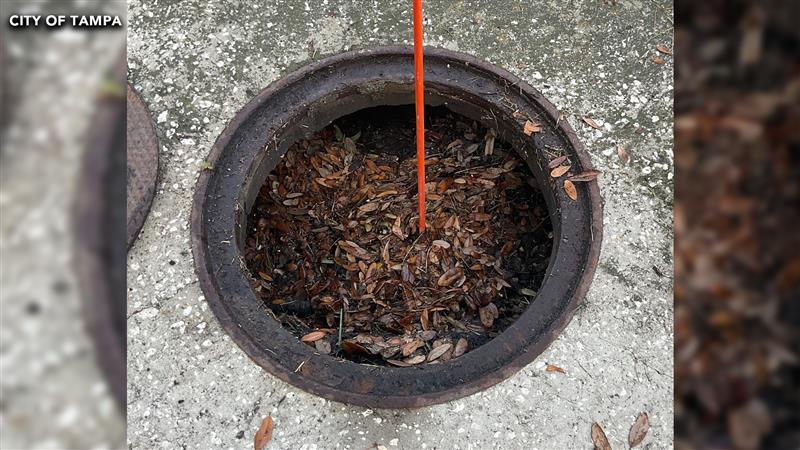TAMPA, Fla. — Six days a week, Tampa workers are clearing out clogged stormwater systems.
They did so most recently at an inlet on W. Browning Avenue that was packed with leaves and other debris until the workers cleared it.
Annelise Meier believes similar clogs have contributed to occasional flooding in their neighborhood, Parkland Estates, including during Hurricane Milton.
WATCH: Council members question if Tampa should spend more on maintenance to prevent flooding
During Milton, for the first time, floodwater climbed up Meier’s driveway and inundated her backyard.
“Oh! It was frightening,” Meier said. “If I’d have been home, I would have been scared out of my wits.”
Ten months later, she’s urging the city to invest more money into maintenance: unclogging culverts, clearing trees from drainage ditches, removing muck from retention ponds.

Members of the Tampa City Council would like to see more maintenance, too.
During a budget workshop Monday, council members like Guido Maniscalco questioned if the city’s $39 million budget for the upcoming year puts enough toward maintenance versus other, bigger stormwater projects.
“Maintenance is the biggest thing,” Maniscalco said. “If you look at the storm drains, I mean, I want to reach in — and I shouldn’t — and just clean out — I mean, you have palm leaves, you have stuff growing out that it’s like no wonder it doesn’t drain.”
As city staff revealed in the workshop, over the past 108 days, the city has completed hundreds of maintenance projects. Additionally, next year’s budget does fund almost $5 million in maintenance contracts in addition to the maintenance work that will be carried out by the city’s full-time employees.
However, a presentation showed some shortcomings.
Ditches and pipes, for instance, are on a 7-year maintenance cycle. As a result, some of those ditches get overgrown with trees and brush.
“I don’t think the trees have grown within the last seven years, and the folks in the neighborhood think it’s probably been decades,” said Councilman Bill Carlson.
A solution, however, likely won’t be quick, cheap, or straightforward. Accelerating maintenance will likely create too much work for city workers to tackle alone, and though the city can hire contractors to help with the workload, their availability and capacity to help could be limited.
The city’s immense stormwater system includes roughly 600 miles of pipes and culverts, 148 ponds, and 186 miles of ditches.
Tampa’s stormwater operations team has 62 full-time employees.
Right now, in the wake of past storms and in anticipation of potential future storms, the team is being supplemented by workers from other departments and is operating in an “all hands on deck” capacity. However, the city staff acknowledged this approach is not sustainable.
Whatever the solution, Stephen Michelini, who represents businesses on South Howard Avenue, hopes the maintenance backlog will stay top-of-mind, because he thinks preventing future flooding depends on it.
“I don’t fault the city staff. I just say, you know, this is too big of an issue, and you can not catch up on a lack of maintenance for seven or 14 years, and you can’t do it in two or three months,” he said.
The city is also working on an Adopt-A-Drain program that will allow neighbors to help the city prevent clogged drains and, as a result, flooding.

Parents weigh in on Florida’s new cellphone ban for K-8 students
Florida's K-8 cellphone ban in schools draws mixed reactions from parents concerned about safety, distractions, and staying connected during the school day.





